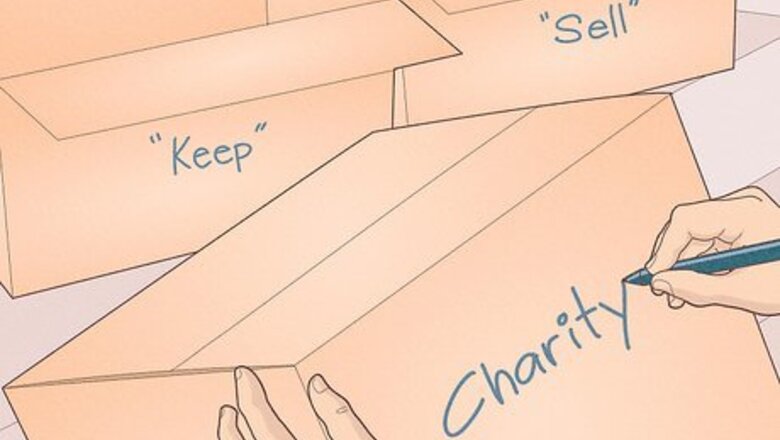
views
Where do I start with removing clutter?
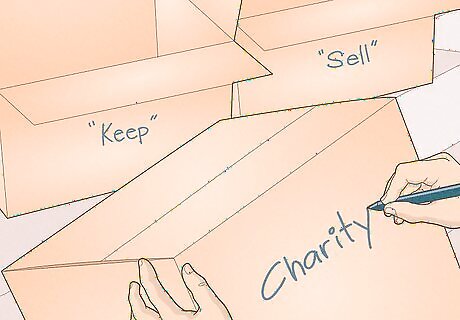
If you’re overwhelmed, take a methodical approach. Bring home three big boxes from your grocery store. Label each box using a permanent marker: one "Keep", one "Sell", and one "Charity". Also get a large, lined garbage can into which you can toss things that you don't want to keep, sell, or donate. Using an organized approach will help you break down the task. In each room make a pile of items on the floor. Pick up an item, decide which box to put it into, and toss it into the box. Repeat the process until all the items in the pile are sorted. Feel free to move the items around between boxes or swap them out after you’ve had a chance to think.
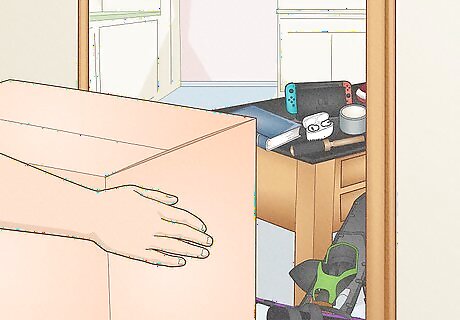
Tackle just one room. Each room or area of a house can present its own level of decluttering difficulties. If you’re not sure where to start, try cleaning up a lesser-used area (like a formal dining room). Spaces that are less frequently used will likely be easier to declutter and can therefore bring a quick reward to keep you motivated.
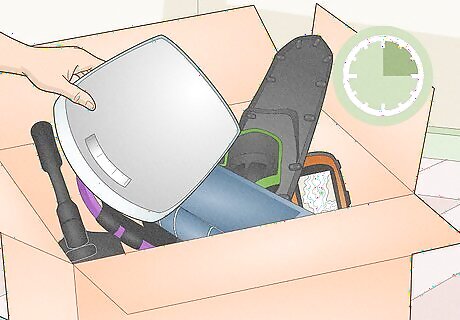
Set a time limit for the decluttering session. Give yourself 15 minutes to one hour, set a timer, and don't start more than you can finish in your allotted time. When the timer rings, make yourself stop, clean up, and then take at least a 15-minute break so you don't burn out. You can always decide to do another round after the break is over.
What’s the fastest way to get rid of clutter?
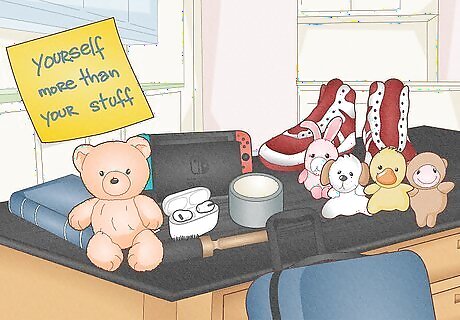
First, shift your mindset to prioritize yourself over your stuff. To declutter quickly and efficiently, you’ll need to recognize that your time and happiness are more important than every item you’re evaluating. Set up a sticky note or a sign to remind yourself that you are more than your stuff. Oftentimes, in de-cluttering, it’s the emotions surrounding objects that prevent you from getting rid of items.
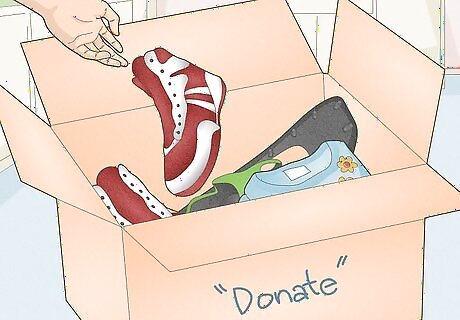
Use a strict rule to get rid of items. Decide to get rid of any item that doesn’t make you enthusiastically say, “Yes! I want to keep that!” By using strong criteria, you’ll be able to make decisions faster instead of staying in the “maybe” zone. If the item isn’t a solid “yes!” then throw it into the “Donate,” “Sell,” or “Trash” pile. You can decide which pile to use based on the item’s value, signs of wear, and potential usefulness to someone else.
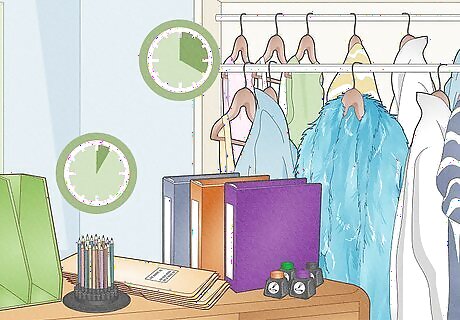
Pick a section of your house to declutter and set a deadline. Instead of trying to sweep through all areas of your living space, pick one area to start. Once you’ve chosen an area, set a realistic deadline to finish decluttering. “I’m going to declutter this closet in 4 hours.” “I’m going to declutter my desk in 1 hour.”
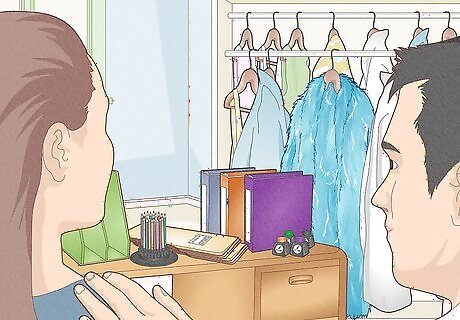
Ask a friend to help you make decisions. If you need extra help and motivation, contact a friend or family member whose advice and opinions you trust. Ask them to help you decide which items to give up and which items to keep. Because they’re emotionally removed from your stuff, they may help you speed up the decision-making process.
How can I organize all my stuff?
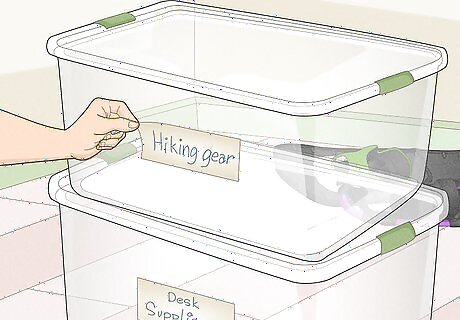
Use labeled storage containers. From under-the-bed storage bins to decorative wicker baskets, there are so many options for keeping your items organized and sorted. Acrylic storage bins work well for toiletries while you can use large plastic containers to store off-season clothes and open-top storage cubes to store small items of clothing. Sort your items by use (i.e. desk supplies, socks, hiking gear) and place items you use frequently where they’re easier to access.
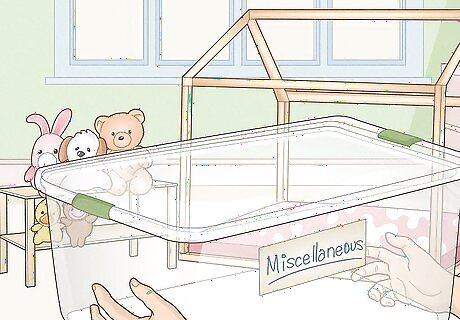
Create a “miscellaneous bin” in each room. By having a dedicated space to put items that are hard to categorize, you can avoid having a lot of clutter strewn around the room. Just be sure to periodically go through the bins to see if you can find a new home for items or donate/toss them.
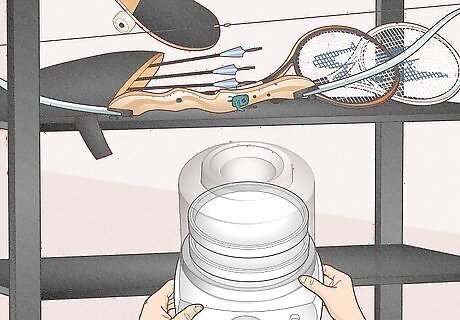
Store items that you don’t often use. For example, if you don’t use your food dehydrator all the time, place it into storage (in your basement or garage). You can also determine whether to store items based on the season. For example, during the winter months you may not entertain as often. If so, you can place your serving trays and extra dishes in the basement until spring or summer comes. You can do the same for seasonal items like BBQ accessories (skewers, grills, etc.). Putting away items temporarily can also help you decide if the item is something you really use or not!
How do you decide what to get rid of?
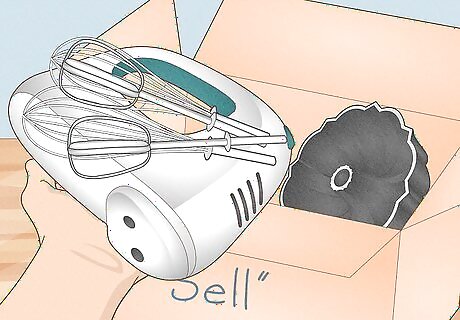
If you haven’t used any item in a year or more, donate or sell it! Try to specifically recall a time when you last used the object. Be sure not to confuse “usefulness” of an item with real use. For instance, if you have a fancy kitchen mixer, but you never bake, that’s a “useful” item, but you’re not actually using it! It may be time to let that item go. Before you let something go, make sure to ask yourself whether you need the item. For instance, medical documents might not be useful to you on a day-to-day basis, and you might not care much about them, but you do need them in case of an emergency! As you’re deciding whether or not to keep an item, ask yourself these three things, “Do I use it? Do I love it? Do I need it?” If you feel guilty about getting rid of an item, don’t beat yourself up. For expensive items or bad purchases, remember you’re paying for the item with the space it’s taking up (if the item isn’t adding value to your life). For sentimental items, recognize that your feelings around the item are not part of the physical object itself. You can hold onto great memories of past trips and experiences without the memorabilia.
How do you get rid of things you don’t want?
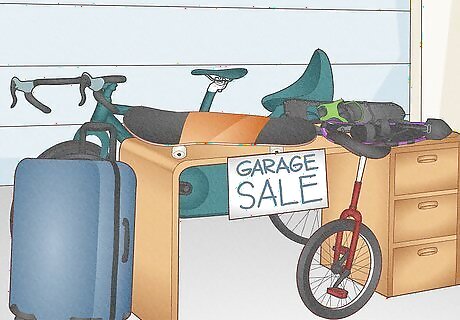
Sell your used items online or have a garage sale. If you’re getting rid of more expensive items, this might be a good option. Try to sell your items as quickly as possible so you won’t be tempted to bring them back into your house.
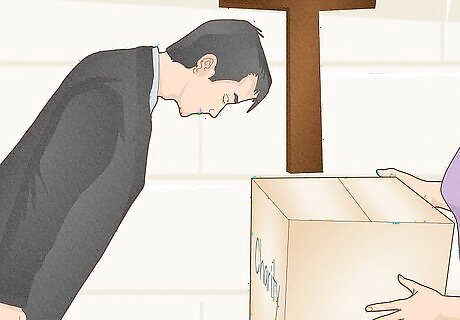
Donate your gently used items to a local charity or shelter. Donating items is much faster than trying to find a buyer. As a bonus, you get to help out those in need. Try donating items to your local shelters, churches, thrift stores, or national charities like the Salvation Army and Goodwill.
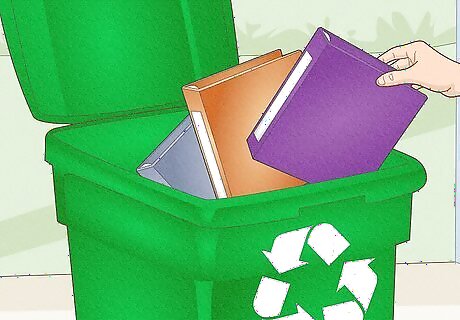
Throw out or recycle your items. If your items are too worn out to be used by anyone else, throw them out. Depending on your local regulations, you may be able to recycle paper, plastic, and even cloth goods (like old t-shirts). Be careful when you recycle electronics. Most areas require dedicated electronic recycling. Search online to find out if schools or local stores are hosting electronics recycling.
How do you keep your house clutter-free?
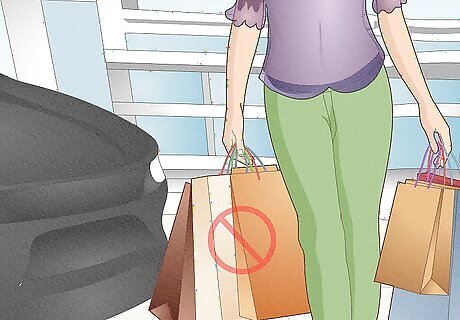
Stop shopping or shop responsibly! When you shop less, you’ll save money and reduce the amount of things you have to organize and clean. If you do shop, shop well. In order to prevent buying twice, buy quality items that you know you’ll really use. Ask yourself, “What’s the real reason I’m buying this? Can I do without it?”
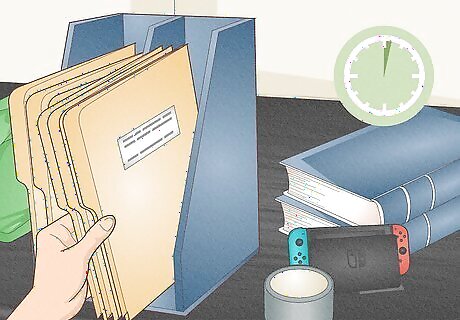
Use the two-minute rule for daily cleaning. If you can finish a task in less than two minutes (washing a dish, opening up mail, throwing something away), do it immediately! You can prevent clutter from building up just by committing to spend two minutes on small tasks like organizing paperwork, throwing out old newspapers, and wiping down kitchen counters.
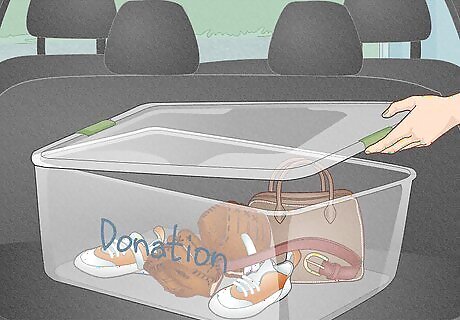
Keep a bin for donations in your car. Setting a plastic box or bag in the trunk of your car makes it easy to get in the practice of clearing out stuff. Whenever you have an item to donate, put it in the bin. Once the bin is full, or whenever you pass by a charity drop off, get rid of your items.




















Comments
0 comment